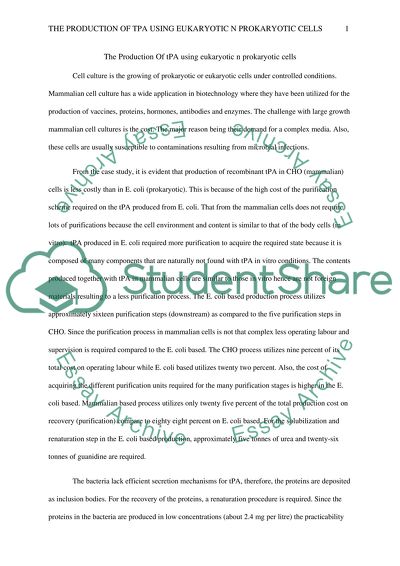Production of tpa using eukaryotic n prokaryotic cells Essay. Retrieved from https://studentshare.org/biology/1633911-production-of-tpa-using-eukaryotic-n-prokaryotic-cells
Production of Tpa Using Eukaryotic N Prokaryotic Cells Essay. https://studentshare.org/biology/1633911-production-of-tpa-using-eukaryotic-n-prokaryotic-cells.


